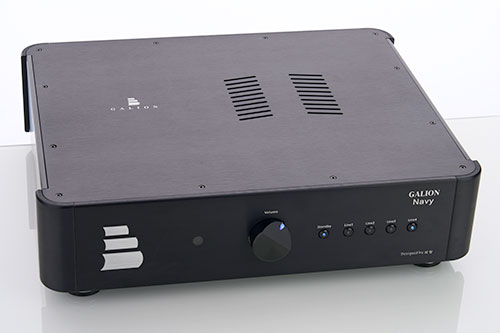Long-time Hifistatement readers may remember that the Alumine FIVE was already a topic here eight years ago. During this time, Jean-Pascal Panchard and his team have continuously developed the FIVE, as evidenced by the SE, SX, and LE model variants. A little spoiler on the side: for me, the SX now plays in a much higher league.
At that time, both the significantly more expensive Kawero! Classic and the LumenWhite DiamondLight competed against the FIVE and quickly made it clear that there was still a little more to be had in terms of spatial imaging than the Stenheim was able to offer. In the treble range it was not a child of sadness, although this tonal tuning was a good match for the perfectly contoured, rich and extremely lively bass range: The “old” FIVE was particularly impressive with its dynamics and playfulness. Of course, Stenheim owner Jean-Pascal Panchard also recognized that there was still a little more of headroom to be achieved in some areas than what the FIVE was capable of. Following the two-way Alumine TWO monitor and the bass module developed for it, this was Stenheim's first true three-way loudspeaker model. With the knowledge gained from expanding the model range – the Alumine Line was soon followed by the Reference Line – the Swiss company also revised its FIVE model. And not just once. I asked Jean-Pascal Panchard to provide some technical information about the FIVE SX, and in his reply, which I quote in translation below, he discussed the development from the FIVE SE to the SX:

"Following the huge success of the Alumine FIVE SE, we wanted to introduce a number of improvements – while retaining the exceptional characteristics that have made this speaker a global benchmark. …
After intensive technical deliberations, we identified three areas where we could achieve further improvements:
| 1. | Improved stability and mechanical grounding: a new, more solid plinth platform |
| 2. | Adaptability to room acoustics: an integrated “Room Control” function |
| 3. | Increased immunity to environmental influences: elimination of electromagnetic interference and eddy currents |
1. Platform
We drew on the insights gained during the development of the solid platform for our flagship Ultime Two loudspeaker. The additional mass beneath the loudspeaker significantly lowers its center of gravity, greatly improving mechanical stability. This new plinth is bolted directly to the cabinet, creating a mechanically unified structure with improved rigidity and damping. The end result is not just a speaker with a new base, but a speaker with a completely new mechanical identity: more mass, outstanding stability, and significantly optimized vibration behavior. The drivers are more firmly connected to the cabinet, and the entire construction is now more securely anchored to the floor. ...
The platform is equipped with oversized, adjustable M30 spikes that allow for generous height adjustment up to 30 millimeters. The adjustments are made from the top of the platform, ensuring easy and precise tuning of both height and vertical angle (front-to-back and side-to-side). Such precision is absolutely crucial in ultra-high-end loudspeaker setups, where even a few millimeters or a subtle change in angle can alter the soundstage or imaging.
2. Room adaptation
This feature helps to adapt the speaker to the often less than ideal acoustic conditions in real listening rooms – a well-known challenge in high-end audio. Most room problems occur either in the low frequency range (typically around 60 to 80 hertz, resulting in a “boomy” bass) or in the high frequency range (3 to 5 kilohertz, resulting in harshness or sharpness). Our “Room Control” allows these ranges to be adjusted by -1 or -2 decibels with a simple jumper setting. This modest but extremely effective change helps to dampen resonances without disturbing the overall sound balance of the speaker. ...
3. Chassis grounding terminal
In recent years, more and more high-end electronics manufacturers have been investigating the use of virtual grounding systems, external grounding systems that are not connected to the mains power supply. We have also conducted promising tests in which we connected the aluminum cabinet of our loudspeakers to such virtual grounding systems. The results are convincing: a noticeable reduction in background noise, improved separation between instruments, and improved spatial resolution — leading to a more natural and immersive listening experience. Therefore, all new models in the Alumine Five, SE, and SX series will be equipped with a chassis grounding connection that is internally connected to several important points in the enclosure to achieve an optimal effect.

























 |
|


















































































